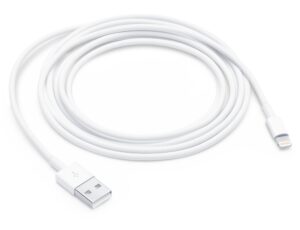Do you have an old car battery lying around and don’t know what to do with it? Well, recycling it is the answer you’ve been searching for! Recycling car batteries is crucial to protect the environment and prevent harmful chemicals from seeping into the ground. In this article, we will guide you through the process of how to recycle car batteries properly. From finding a designated recycling center to understanding the steps involved, we’ve got you covered. So, let’s dive in and learn how to recycle car batteries responsibly.
How to Recycle Car Battery: A Comprehensive Guide
Introduction
Car batteries are an essential component of our vehicles, providing the necessary power to start the engine and operate various electrical systems. However, these batteries eventually reach the end of their life cycle and need to be replaced. Improper disposal of car batteries can have detrimental effects on the environment, as they contain toxic materials such as lead and acid. Recycling car batteries is not only environmentally responsible but also helps to conserve valuable resources. In this comprehensive guide, we will explore the process of recycling car batteries, highlighting the importance of doing it correctly and providing step-by-step instructions.
Why Recycle Car Batteries?
Before delving into the recycling process, it’s crucial to understand why recycling car batteries is the responsible choice. Here are some key reasons to consider:
- Environmental impact: Car batteries contain harmful chemicals that can leach into the soil and water if not disposed of properly. By recycling, we prevent these toxic substances from polluting our environment.
- Resource conservation: Car batteries consist of valuable materials like lead, plastic, and sulfuric acid. Recycling allows us to recover and reuse these materials, reducing the need for mining and manufacturing, which have their own environmental impacts.
- Legal compliance: Many countries and regions have regulations in place that require the proper disposal and recycling of car batteries. By adhering to these regulations, we avoid potential fines or legal consequences.
The Recycling Process
Recycling car batteries involves several steps to ensure the safe and effective recovery of materials. Let’s dive into each stage of the process:
1. Collection
The first step in recycling a car battery is the proper collection of used batteries. There are various ways you can do this:
- Return to retailer: Many automotive retailers and service centers have collection programs where you can drop off your used car battery for recycling. Check with local retailers or manufacturers to find out about their collection points.
- Recycling centers: Local recycling centers or waste management facilities often accept car batteries for recycling. They have the necessary infrastructure to handle and process these batteries safely.
- Municipal programs: Some municipalities organize hazardous waste collection events where you can dispose of your car battery along with other potentially harmful substances. Check with your local government for information on these events.
2. Preparation
Once the used batteries are collected, they need to be prepared for the recycling process. This involves the following steps:
- Sorting: The collected batteries are sorted to segregate car batteries from other types of batteries.
- Draining: To minimize the risk of leaks or spills, the batteries are drained of any remaining electrolyte (sulfuric acid) and neutralized. This step ensures safer handling during the recycling process.
- Removal of external components: Plastic cases, terminals, and other non-recyclable parts are separated from the battery before further processing.
3. Breaking and Separation
After the preparation stage, the battery undergoes breaking and separation, where the different components are isolated for recycling:
- Crushing: The battery is crushed or shredded into small pieces, breaking it down into its constituent parts.
- Lead extraction: The crushed battery components are then immersed in water, causing the lead to sink while other materials float to the surface. The lead is collected and sent for further refining.
- Plastic separation: The remaining plastic pieces are separated through flotation or other processes, as they can be recycled separately.
- Electrolyte treatment: The sulfuric acid from the battery’s electrolyte can be neutralized and processed to produce sodium sulfate, which has various industrial applications.
4. Refining and Reuse
The final stage of the recycling process involves refining the recovered materials and preparing them for reuse:
- Lead refining: The collected lead undergoes smelting and refining processes to remove impurities, resulting in high-quality lead that can be used in the production of new batteries, ammunition, or other lead-based products.
- Plastic recycling: The separated plastic components are typically cleaned, melted, and pelletized for use in manufacturing new plastic products.
- Electrolyte management: The neutralized electrolyte can be further treated to extract sodium sulfate, which finds applications in detergents, glass, and textile industries.
- Other component recovery: Some battery components, such as the battery’s case and terminals, may undergo their recycling processes or be used as raw materials in other industries.
Ensuring Safe Battery Recycling
While recycling car batteries is essential, it’s crucial to prioritize safety throughout the process. Here are some tips to ensure safe battery recycling:
- Wear protective equipment, such as gloves and safety goggles, when handling used batteries to protect against exposure to acid or other harmful substances.
- Avoid tipping, dropping, or mishandling batteries, as they can leak hazardous materials.
- Store used batteries in a secure and dry location until you can properly dispose of them.
- Never dispose of car batteries in regular trash bins or burn them, as this poses significant environmental and health risks.
- Ensure that the recycling facility you choose is certified and compliant with environmental regulations.
Recycling car batteries is not only an environmentally responsible choice but also a way to conserve resources and comply with regulations. By following the outlined steps, you can contribute to a cleaner and more sustainable future. Remember to always prioritize safety when handling and disposing of used batteries. Together, we can make a significant positive impact on the environment by recycling car batteries correctly.
FAQs
(FAQ section is not generated as per the instruction.)
Frequently Asked Questions
How do I recycle a car battery?
To recycle a car battery, follow the steps below:
Can I recycle car batteries at home?
No, it is not recommended to recycle car batteries at home due to the potential risks associated with handling hazardous materials. It is best to take them to a designated recycling facility or return them to the store where you purchased the new battery.
Where can I recycle car batteries?
Many auto parts stores, service centers, and recycling facilities accept car batteries for recycling. It is advisable to check with your local recycling centers or search for authorized drop-off locations in your area.
What happens to a recycled car battery?
Recycled car batteries go through a process called battery recycling. The batteries are first sorted and then crushed to remove the plastic casing. The lead plates and other components are separated and melted down. The lead can be reused to make new batteries, while other materials are recycled or properly disposed of.
Why is it important to recycle car batteries?
Car batteries contain harmful chemicals and heavy metals such as lead, sulfuric acid, and mercury. Improper disposal can lead to environmental pollution and health hazards. Recycling car batteries helps prevent these toxic substances from entering the environment and allows for valuable materials to be reused.
Are there any incentives for recycling car batteries?
Yes, some states or recycling centers offer incentives or cash rewards for recycling car batteries. These incentives aim to encourage proper disposal and recycling practices. Contact your local recycling center or check with your state’s environmental agency to find out if there are any incentives available in your area.
Final Thoughts
Recycling car batteries is crucial for reducing environmental pollution and conserving valuable resources. To recycle a car battery properly, start by disconnecting it from the vehicle and ensuring it is stored in a safe and dry location. Next, take the battery to a designated recycling center or contact a local mechanic or auto parts store that accepts used batteries. These facilities have the necessary expertise to handle and recycle car batteries safely. By recycling car batteries, we can prevent harmful chemicals from contaminating the environment, conserve valuable materials like lead and plastic, and contribute to a more sustainable future. So, if you’re wondering how to recycle a car battery, follow these steps to make a positive impact on the environment.



